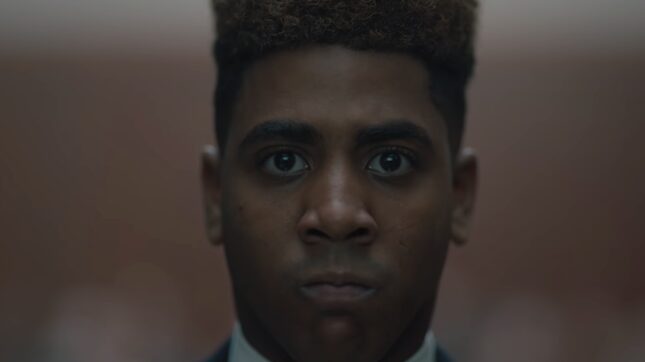
Screenshot: Netflix
One of the earliest scenes in Ava DuVernay’s 2014 film Selma depicts the infamous Birmingham Church Bombing. In September of 1963, four adolescent girls were killed and 22 others were injured after the Ku Klux Klan made the church a target of its hatred. When I saw the film, the scene made me weep. I was grateful I’d chosen to watch it alone, at home, so that I could pause and collect myself before continuing on, forcing myself to bear witness to a story that so clearly demonstrated the need for continued activism and acted as an additional catalyst for the Civil Rights Movement as we know it. What I didn’t know at the time, was that by 1963, homemade bombs were being set off in black homes and churches with such frequency that the city earned the nickname “Bombingham.” In a parallel universe, those four girls are merely a statistic, their names lost in the deluge of dead black people who suffered at the hands of a racist system. When They See Us, Netflix’s new docudrama about the “Central Park 5” also helmed by Duvernay, induced a similar conflict for me: their story is horrifying, tragic and utterly typical in almost every way.
Most people are familiar with the broad strokes of what happened to Kevin Richardson, Raymond Santana, Antron McCray, Yusef Salaam, and Korey Wise. After being rounded up and coerced into confessing to a brutal rape, the boys were charged, convicted, and served sentences ranging from 5 to 15 years before being exonerated in 2002. But the four episodes paint a picture that reveals how useless it can be to rail against a “system.” Abusive institutions like the justice system the boys were subjected to are made up of individual people making individual choices to do collective harm under a tenuous banner of “greater good.” These “systems” protect themselves, acting in concert to uphold the status quo and bend outliers toward the party line. When They See Us tells the story of boys who became men under harsh and unearned conditions and how their plight rippled out to affect their families, loved ones, and their communities.
-

-

-

-

-

-

-

-

-

-

-

-

-

-

-

-

-

-

-

-

-

-

-

-

-

-

-

-

-

-

-

-

-

-

-

-

-

-

-

-








































